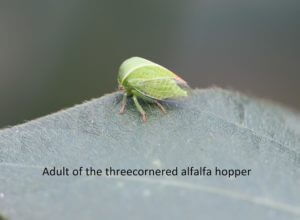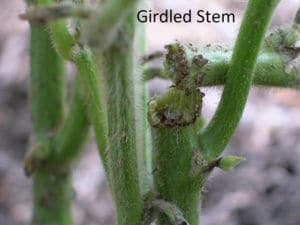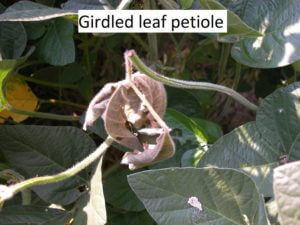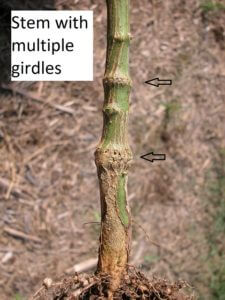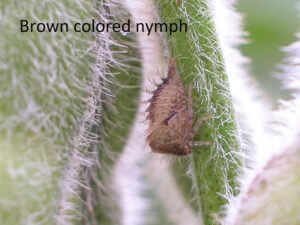Management options
| Insecticide (Trade Names) for THREECORNERED ALFALFA HOPPER | Lb Active Ingredient per Acre | Amount Formulation per Acre | Performance Rating |
|---|---|---|---|
| acephate 90 (Orthene 90S) | 0.75 - 0.99 | 0.83 - 1.10 lb | 8 |
| bifenthrin (Brigade 2E, Discipline 2E, Fanfare 2E) | 0.05 - 0.10 | 3.2 - 6.4 oz | 9 |
| esfenvalerate (Asana XL 0.66E) | 0.03 - 0.05 | 5.8 - 9.6 oz | 8 |
| β-cyfluthrin (Baythroid XL 1) | 0.025 - 0.044 | 1.6 - 2.8 oz | 8 |
| γ-cyhalothrin (Declare 1.25) | 0.0075 - 0.0125 | 0.77 - 1.28 oz | 8 |
| λ-cyhalothrin (Warrior II 2.08) | 0.015 - 0.025 | 0.96 - 1.6 oz | 8 |
| Z-cypermethrin (Mustang Maxx 0.8E) | 0.0175 - 0.025 | 2.8 - 4 oz | 8 |
- Threecornered alfalfa hoppers are more problematic in reduced tillage systems. The highest populations are typically observed in late planted fields such as double-cropped soybeans.
- Lodging of plants tends to be worse in fields with low plant populations, and thus, achieving adequate plant stands can reduce the risk of economic injury.
- Maintaining a clean field border may help reduce population numbers.
- For more information see http://utcrops.com/soybean/soybean_insects/SoybeanTCAH.htm.
